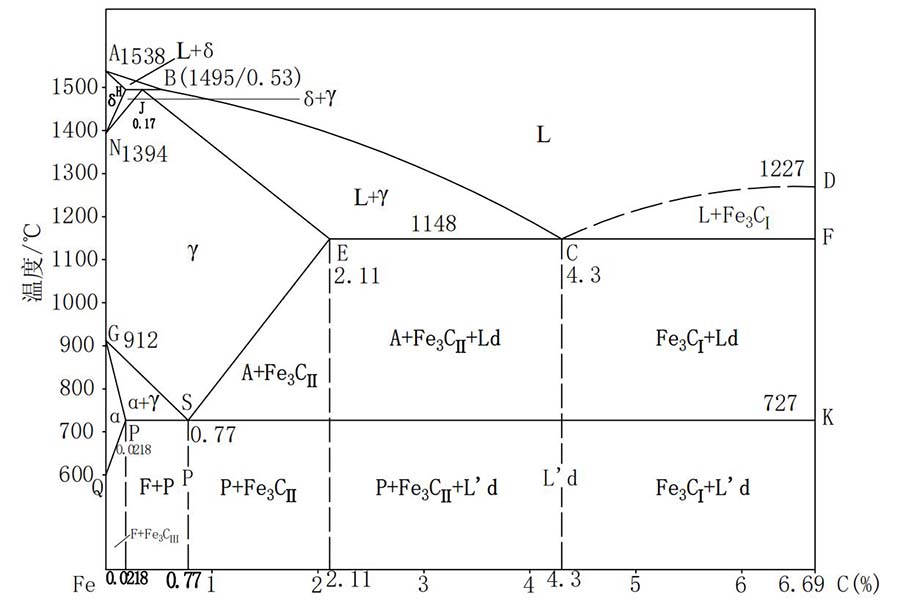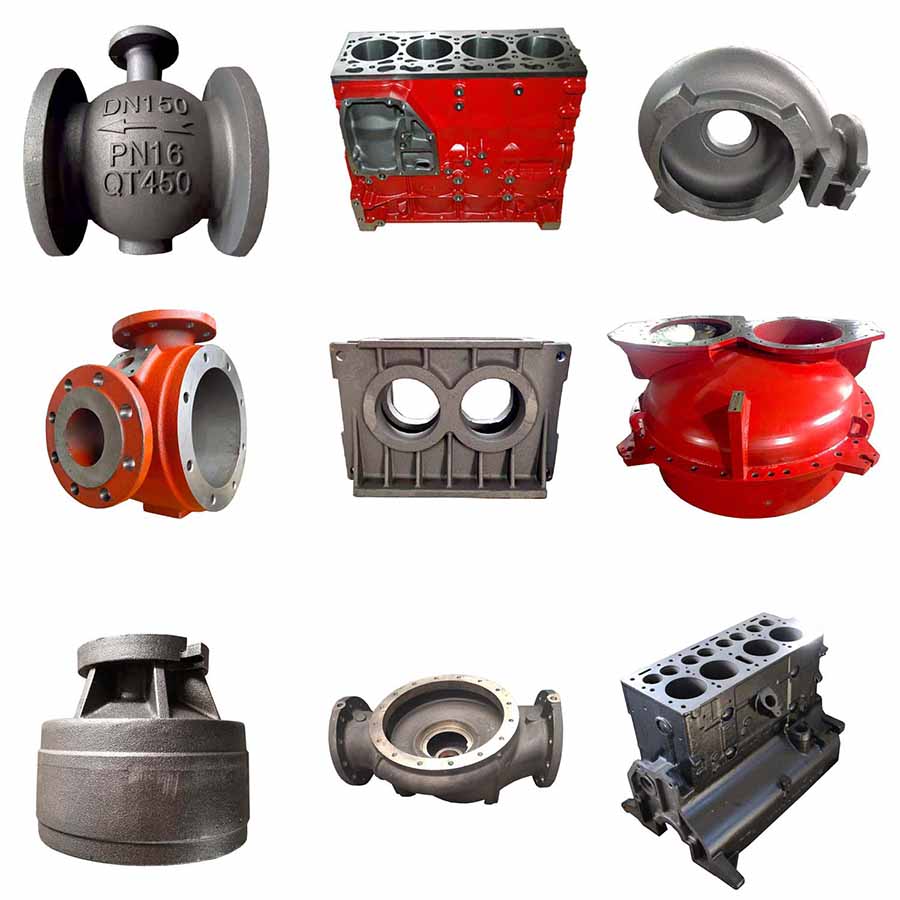From the iron-carbon equilibrium diagram, it can be observed that cast irons have essentially cementite and ferrite. Because of the larger percentage of carbon, the amount of cementite is high resulting in very high hardness and brittleness qualities for cast iron.
When cast iron is slowly cooled, the cementite decomposes into iron and carbon in the form of graphite which is called graphitization Cast irons where a large percentage of cementite is decomposed by graphitization are called grey cast irons. Cast iron in which graphitization has not taken place, i. e, all the carbon is in the combined form, is called white cast iron. The graphitization process requires time and therefore, when liquid cast iron is cooled rapidly, white cast iron would result. White cast iron is comparable in properties to that of high carbon steels. However, it is highly brittle and as such is not used for structural parts. It is useful for parts where abrasive wear is present. Tensile strength varies between 170 to 345 MPa and is usually about 240 MPa. The hardness ranges from 350 to 500 BHN. In view of the very high hardness, the machinability is poor and is commonly finished by grinding.
In the presence of graphitizing elements such as nickel and silicon, iron carbide decomposes as follows: Fe3C→3Fe+C

The decomposition is controlled by the graphitizing agents as well as the cooling rate.
The dissociated carbon is in the form of graphite which is very soft and without any strength. Thus, it reduces the hardness and increases the machinability of cast iron. The shape of graphite present in cast irons would greatly affect its strength. When it is in a flake-like shape as in grey cast iron, the graphite breaks up continuity of iron and greatly weakens it. But it also helps in absorbing vibrational energy, as a result of which grey cast iron is normally used for the beds of machine tools. Grey cast iron is easily machinable and is the cheapest form of cast iron. Because of its low melting temperature, higher fluidity and negligible shrink-age on cooling, it is extensively used in casting processes.
The other form of cast iron is known as malleable iron in which free carbon is present in the form of nodules in the matrix of cementite and ferrite. This is achieved by first chilling the casting so that all white cast iron is formed, followed by a controlled heat treatment process so that some of the cementite is transformed to ferrite and nodules of free carbon. This material is more ductile than grey cast iron. This form is suitable only for components with very small section thicknesses since all white cast iron is to form the starting point for malleable iron.
When graphite is present as small, round, and well-distributed particles, its weakening effect is small and such cast irons would have higher ductility. This type of cast iron is called ductile or nodular iron or spheroidal graphite or simply SG iron. This form of graphite can be achieved by adding elemental magnesium or cerium or a combination of the two elements to molten cast iron. Magnesium is added in quantities of 0.07 to 0. 10% followed by the addition of ferro-silicon to promote graphitization. During solidification, magnesium helps in the distribution of graphite throughout the metal.
Ductile iron has better strength-to-weight ratio, better machinability and higher impact value. Moreove, the ductile iron components are produced by casting process wherein better control of component shape can be achieved compared to drop forging. Thus, many a component such as crank shafts and connecting rods manufactured usually by drop forging is increasingly being replaced by ductile iron castings. Typical com parison of different casting materials is given in the following table:
| Property | Gray Cast Iron | Melleable iron | Ductile Iron | C30 steel |
| Melt temperature, ℃ | 1175 | 1200 | 1150 | 1450 |
| Specific gravity, kg/m³ | 6920 | 6920 | 6920 | 7750 |
| Vibration damping | Exellent | Good | Good | Poor |
| Modulus of elasticity, MPa | 126174 | 175126 | 173745 | 210290 |
| Modolus of rigidiy, MPa | 48955 | 70329 | 66190 | 78600 |
Typical Casting Components by Cast Iron:

 русский
русский



